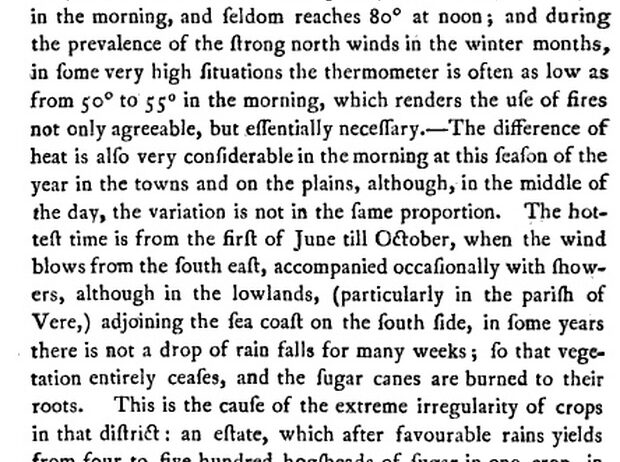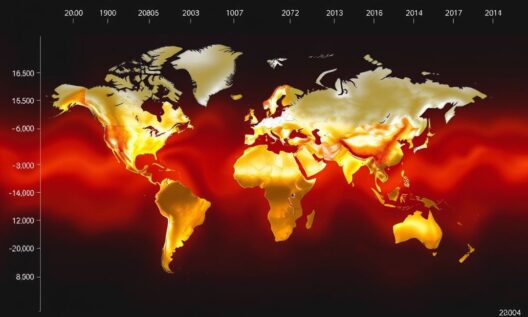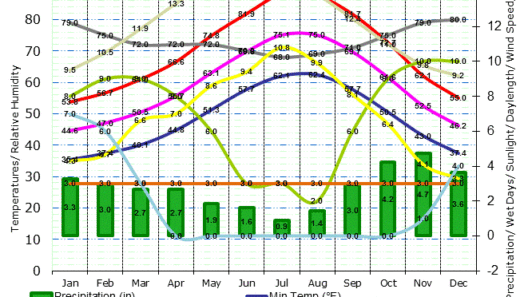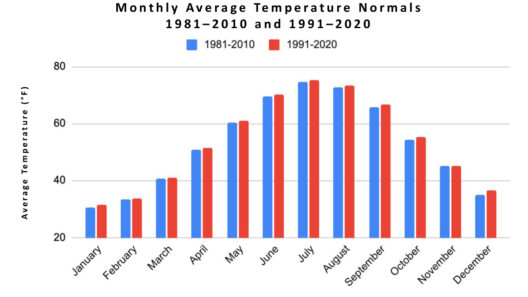Jamaica, the enchanting island in the Caribbean, is not solely recognized for its vibrant culture and pulsating reggae rhythms. It boasts a climatic tapestry that is as captivating as its music. This tiny island, laden with rich biodiversity and sprawling landscapes, carries an intricate narrative woven into its weather patterns. A closer examination reveals a climate that oscillates between sunlit exuberance and the refreshing embrace of rain—a duality that shapes the everyday lives of its inhabitants while also influencing the broader environmental context.
The climatic schema of Jamaica can predominantly be characterized as tropical, with its climate being divided into distinct wet and dry seasons. The wet season typically extends from May through November, introducing a season of lush greenery and revitalization, while the dry season spans from December to April, offering sun-drenched days ideal for tourism and outdoor festivities. This rhythm of the seasons is replete with cultural significance and environmental impacts, making it imperative to navigate the nuances of Jamaica’s climate.
Temperature plays a quintessential role in defining Jamaica’s climate. Average temperatures hover around 79°F (26°C) year-round, offering a consistency that sun-seekers find enticing. Coastal areas are characterized by a warm maritime influence, which mitigates extremities, while the mountainous interior tends to experience cooler climes, especially at higher elevations. The Blue Mountains, for instance, present a stark contrast to the sun-soaked beaches of Negril, showcasing how geographical variety can affect localized weather conditions. The interplay between altitude and thermal dynamics creates microclimates that sustain an array of flora and fauna unique to different regions of the island.
Notably, rainfall patterns have a profound impact on Jamaica’s ecological systems. The eastern coastline, particularly regions like Portland, receives the highest amounts of precipitation, often exceeding 100 inches annually. In contrast, the western and southern strips, including the popular tourist destination of Montego Bay, see significantly less rainfall. This disparity leads to a varied landscape, with densely forested areas juxtaposed against arid regions, contributing to the ecological diversity for which Jamaica is acclaimed.
Weather phenomena, such as hurricanes, are a chronic concern for Jamaica, particularly during the peak of the Atlantic hurricane season from August to October. These storm systems can wreak havoc on local economies, infrastructure, and communities, and their increasing frequency is a stark reminder of the realities of climate change. As sea temperatures rise due to global warming, the potential for more vigorous and destructive storms becomes likely, leading to heightened discussions surrounding climate resilience and adaptive strategies for vulnerable populations.
Moreover, Jamaica’s geographic position provides a unique vantage point on climate fluctuations. Situated within the hurricane belt, the island’s weather is both a source of beauty and an arena for ecological vulnerability. The impact of increased rainfall has cascading effects on erosion patterns, fresh water supplies, and agricultural productivity, all essential for sustaining local communities. Farmers often depend on the delicate balance of rainfall; too much can lead to flooding, while too little risks drought. This delicate symbiosis calls for innovative agricultural techniques that can adapt to the island’s shifting climatic realities.
In urban centers like Kingston, the interplay between climate and culture becomes apparent as the population embraces adaptations to their environmental conditions. Urban heat islands emerge as concrete and asphalt absorb heat during the day, necessitating the incorporation of green spaces into city planning. Such climate-conscious urbanization practices lend credence to the notion that sustainability and urban life can coexist harmoniously.
As the island grapples with the intricate challenges posed by climate change, local initiatives serve as beacons of hope. Community-led efforts aimed at reforestation, sustainable agriculture, and renewable energy projects are gaining traction. Such movements not only underscore the resilience of the Jamaican people but also reflect a growing consciousness around environmental stewardship and conservation. The commitment to revive and cherish natural resources speaks volumes about the future Jamaica envisions—one where harmonious coexistence with nature is paramount.
Despite the challenges posed by climate change, Jamaica’s aesthetic allure remains intact, drawing in tourists who seek to experience both its natural beauty and rich heritage. The picturesque beaches, coupled with the island’s unique cultural expressions in reggae music and dance, create a narrative of resilience, showcasing how Jamaica’s climate shapes not just the landscape but the very essence of its people. The iconic sound of reggae serves as a backdrop to this climate dialogue, inviting contemplation on both peace and environmental harmony.
In conclusion, to appreciate Jamaica’s climate is to understand the intricate balance of nature, culture, and community resilience. The rainfall that replenishes the earth, the sun that nurtures life, and the winds that have carried melodies from the reggae heart of the island are all part of a larger narrative. As Jamaica continues to navigate the impacts of climate change, the confluence of identity and environment remains a vibrant tapestry awaiting exploration. Embracing this shift in perspective fosters a curiosity not just about Jamaica’s climate, but about the global dialogue on our planet’s future. Here, the reggae rhythms resonate alongside the gentle patter of rain—a reminder that, in this island paradise, every drop counts, and every sunbeam shines with promise.








